Discussion
審査講評(6)
Comments on Jurors’ Special Prizes winners
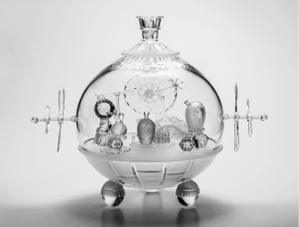
Voyage of Memories
H45×W52×D32
2016
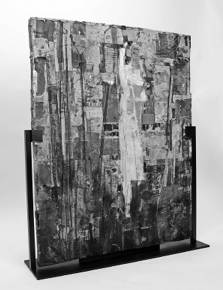
Barracks 赤い窓
Barracks Red Windows
H105×W82×D22
2016
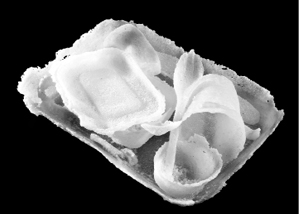
Ghostly Memories from My Time as an Air Hostess
H10×W25×D18
2014
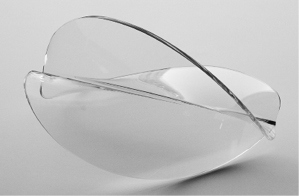
フォルム2016
Form 2016
H32×W58×D34
2016
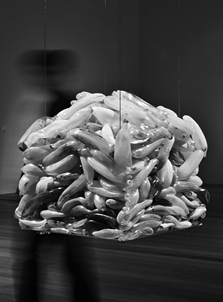
あなたは一本のバナナ
It is You!!
H54×W57×D57
2016
Takeda ───── That brings us to the end of the jurors’ comments on all the prize winners. Various types of works were chosen, and next, each juror will comment on the works that they selected for their personal prizes. After that, we would like to have a casual discussion. Please feel free to ask us questions, make requests and talk to us about anything. All the jurors are waiting for your questions and comments. First, the Bodil Busk Laursen Prize goes to ‘Voyage of Memories’ by Kazumi Ohno from Japan.
Laursen ───── It is a very good idea that finally the jurors themselves can choose the work which a sort of captivate you and in a way very sad that not all the pieces can have a prize but at least we have in the end the opportunity of just being the private person.
I’ve chosen the work by Kazumi Ohno, a young artist, age 22, and the title of the work is “Voyage of Memories.” When I saw the work, I immediately fell in love with it because of its playfulness and poetry and skill. I like the idea of storing one’s memories of beloved toys in a sealed glass form, that will keep them together for all eternity at least until the work breaks which it shouldn’t.
As the title indicates, the idea might be to send this wonderful small bubble out into space with the help of the propellers.
But for now it is firmly rooted here in Kanazawa through three proper feet Different techniques have been used by the young artist who is now clearly ready for the life of a grown up glass artist, very skillful and very talented.
Takeda ───── The Yan Zoritchak Prize goes to ‘Barracks Red Windows’ by Kohei Kishimoto from Japan.
Zoritchak ───── The work of Kohei Kishimoto, a Japanese artist, is very good in reflection and excellent in realism. The work tells us a human story. I wonder whether the story is positive or negative.
Takeda ───── The William Douglas Carlson Prize goes to ‘Ghostly Memories from My Time as an Air Hostess’ by Dina Priess Dos Santos from Argentina.
Carlson ───── My choice was not hard because I think that this piece and its artist is a kind of dealing with honest truth. Her memories and that has been a very main theme of the lot of the pieces. So memories must be very important and as we know that’s true, I imagine that this is a pretty sentimental crowd of the artists if memories are really the things.
Her memories and the title “Ghostly Memories from my Time as an Air Hostess” maybe says at all. We’ve all spent hours trying to just get to our next destination on an airplane. We’ve all been served by airline hostesses and stewardesses and flight attendants. We know that they are doing it every day all day.
We only do that traveling in an airplane once in a while.
This is a collection of artifacts.
They are remnants, they are partially decayed, they are all one time consumer products.And they are also ghostly images that probably haunts the nightmares of an airline hostess.
The former juror on our assessment, our review of the exhibition, Jiri Harcuba, a Check Republic artist and quite a wonderful guy, used to use the word “Wabi Sabi” when he would describe some of the pieces that he liked particularly during the assessment and juroring.
He was a character. Unfortunately he died but we have a good memory of him. “Wabi Sabi” for him meant a kind of ultimate, artistic or aesthetic honesty. This is a very honest piece. It’s not pretentious. It is using glass merely as a record of a memory of an event of something that we can have a connection to.
Takeda ───── Thank you. Carlson mentioned a previous juror who was particular about the Japanese aesthetic idea of ‘Wabi Sabi’. Jiri Harcuba from Czech Republic was very much interested in Japanese culture and history, maybe because Czechoslovakia was a nation with a particular history. He was a person who had both Western and Oriental culture and history as his background. He often made comments with keen intuition. It was impressive. I think Carlson mentioned the same feeling. I am surprised to hear the phrase ‘Wabi Sabi’ about the work from Argentina. It was interesting.
Next, the Jun Fujita Prize goes to ‘Form 2016’ by Shougo Abiru from Japan.
Fujita ───── I selected Abiru’s work of fused and bent plate glass. Two pieces of very thick plate glass are fused, twisted and bent while soft. Abiru has been creating works like this for a long time. He is now in his 50’s and though he is no longer a young artist, he always attempts to create powerful forms. I have a favorable impression of him because he does not strive for something that’s simply interesting, but he always pursues the origin of forms. His work is made of solely plate glass. It is not colored and inorganic, but I feel a fresh Japanese sensibility in the work, so I selected this work as the Jun Fujita Prize winner.
Takeda ───── My special prize, the Atsushi Takeda Prize goes to ‘It is You!!’ by Eriko Kobayashi from Japan. I was moved and a little surprised to see her work because I compared the work’s richness, volume and dynamic feeling with the lady who created the work. I wondered what made her create an artwork of bananas and why she made 300 of them. I do not know her deep intention. According to her application sheet, her inspiration is that these bananas might be human beings, including herself, wearing a banana skin. In other word, it is an aggregate of human beings who have various colors and shapes. Various people we meet in our society look different from the outside, but are actually the same inside. She wanted to express such an existence. Without having any other deep thoughts, and without considering forms or aesthetic senses, with an intensity that came from the heart, she created bananas and fused them together to make a large lump. Her straightforward eagerness to express herself has moved the viewers for no rational reason. It is quite an interesting work as glass art. She is still young and she might carry on with this type of work. I gave my own prize to her as a mark of esteem.

